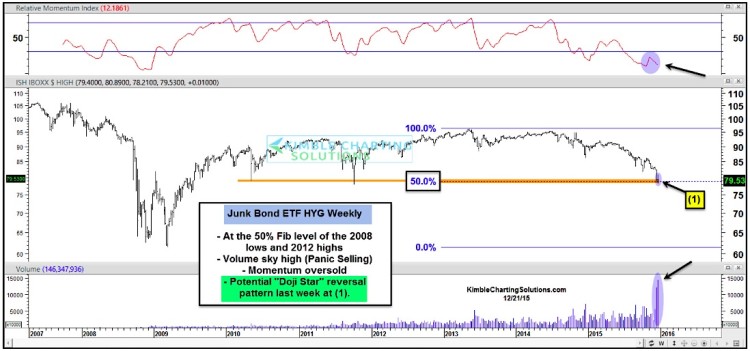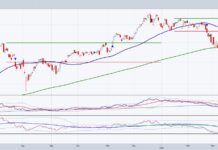High yield bonds, also known as junk bonds, have several purposes in the marketplace. One of those is to serve as a key indicator of risk appetite in the financial markets. If no one is willing to take on the risk of higher yielding debt, then that could be a sign that the market is turning risk averse.
Over the past two years or so, junk bonds have underperformed, diverging with the S&P 500 Index. As many investors are aware, market divergences can go on for some time, so careful how you incorporate them into your analysis.
That said, the performance of junk bonds has been a good indicator historically. For example, when junk bonds are strong, the stock market tends to perform well. However, junk bonds underperformance has typically been a drag on the stocks.
And look no further than this year. Although stocks are outperforming Junk over the past two years, the rally has stalled. And, at present, the S&P 500 Index is down marginally for the year.
BUT there are some signs that Junk bonds are trying to get up off the mat. Below is a chart of the high yield/junk bonds ETF (HYG). Here are a few things that investors will want to watch for:
- Last week, HYG hit its 5o% Fibonacci retracement level (2009 lows to 2013 highs). At the same time, it retested its 2010 and 2011 lows. Momentum is oversold and volume has increased.
- HYG created a reversal pattern known as a “Doji Star” (see point 1 on the chart). Follow through higher is key. Without it, this is nothing more than a blip.
To be certain, one week does not make a new trend. So investors need to monitor this development along with other key indicators. But if HYG can rally higher, it would likely provide a lift to stocks as well.
Thanks for reading and have a wonderful holiday season.
Twitter: @KimbleCharting
The author does not have a position in the mentioned securities at the time of publication. Any opinions expressed herein are solely those of the author, and do not in any way represent the views or opinions of any other person or entity.









